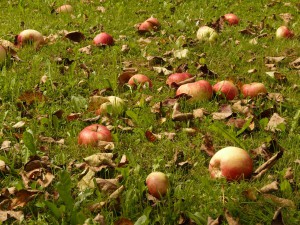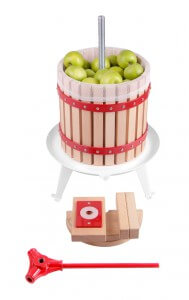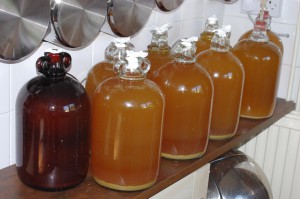Nothing says autumn like the sight of earthy, delicious apples falling from the trees. But have you ever thought about turning those same apples into something a little more refreshing? Yes, I’m talking about cider making, and how it can be easily done even in your own back garden. Follow these steps and you’ll soon be enjoying a rewarding glass of cider of your own creation.
Step 1 – Collect the Apples
While the ideal is to have an apple tree or two in one’s own garden, don’t despair if you don’t – market bought apples will do, or even wild apples from the roadside or country lanes. If you do have your own apple tree, a good tactic is to place a sheet under the tree and then shake the tree onto the sheet, this will ensure only the ripe apples fall from the tree. You’ll need approximately 2kg of apples for every 1 litre of cider you want to produce. It is worth spending some time here thinking about what kind of cider you’d like to produce, as the kind of apples you pick for the cider will, naturally, have the biggest impact on this. Sweet or sharp depends on the apples!
Step 2 – Preparation for Pressing
It never hurts to give the apples a good wash before you do anything else. The apples may have pesticides or bacteria on them which could harm the brewing process. Then, it’s crushing time. You can use a fruit crusher available here from Primrose, although if you are aiming for a lower quantity of cider a normal kitchen fruit juicer may also do the job – you could even try simply smashing them up in a bucket with a piece of timber if you’re so inclined – watch out for splinters though! At the end of this stage, you should end up with a mushy substance known as pulp.
Step 3 – Pressing the Pulp
Once your pulp is prepared, the next step towards making your cider is to press it. This can be done using Primrose’s range of fruit presses. Simply put the apple pulp into the provided mesh and place in the fruit press – then squeeze! Not forgetting to place a container below the press to collect the apple juice and always remember to perform this step outside – things can get a little messy! One good tip is to let the pulp “breathe” for a while after pressing, let the juice pour out then come back and press some more – this way you’ll ensure you get all the juice out of your apples that you can, and you let the press do the work.
Step 4 – Sterilisation
This is where things can get a little complicated. Firstly, you might want to sterilize your juice, particularly if many over the apples are over-ripe or have many brown and rotten bits in them. This will help kill off any harmful bacteria that might spoil your juice. You can do this by adding sodium metabisulphite (also known as E223) in the form of a Campden Tablet. You CAN skip this step, especially if you want to produce an all natural product, however this is not really advisable. All natural cider is very difficult to get right. If you want to try it though, good luck! If your goal was simply to make delicious homemade apple juice – then congratulations! You’ve made it. If you’d like turn it into cider, however, then read on.
Step 5 – Fermentation
Once you’ve got your sterilised juice, the next stage is the fermentation itself. If you’re going for an all natural brew, you can simply leave the juice in a plastic or glass sterilised container and wait, hopefully, with enough time the natural yeasts already present will start to ferment the apple juice. However, the safer bet is to add some yeast yourself, remembering, however to wait 24 hours after sterilising to do this, otherwise the sterilising agent may kill off your yeast before it has a chance to turn those sugars into alcohol. Any wine or beer grade yeast should do the job. Bread yeast does not yield such good quality cider.
Fermentation should take between 5 and 21 days and be in a sterilised container at a temperature of about 20 – 27 degrees celsius. If you’re going the techie road you could use a hydrometer to measure when the fermentation is finished, otherwise you’ll have to go by taste. It might also be a good idea to conduct most of the fermentation in a demijohn or similar container with an airlock or fermentation trap. This will prevent oxidisation of your cider, which leads to vinegar being produced. You’ll only want to use an airlocked container, however, after a few day of leaving your brew exposed to the air, as at the start the yeast will need some air to do its job.
Step 6 – Bottling
Once the cider is fermented, you’ll want to get the cider ready for drinking. Ensure that the sediment left at the bottom after fermentation doesn’t get into the bottle. You can achieve this by either pouring carefully from whatever container you used for fermentation, or by using a sieve. If you’re a purist like me you’ll be wanting flat, not sparkling cider, in that case remember to give the cider a good stir to release any extra gas before storing it.
And that’s it, enjoy your cider!
–
Charlie works in the Primrose marketing team, mainly on online marketing.
When not writing for the Primrose Blog, Charlie likes nothing more than a good book and a cool cider.



